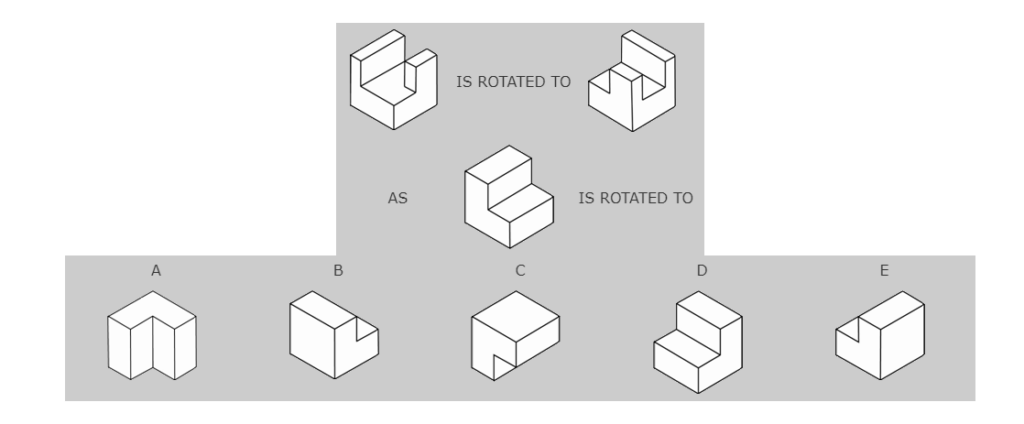
Spatial intelligence, often referred to as visual-spatial intelligence (VSI), or the ability to perceive, process, and manipulate objects in “space”, is a fundamental cognitive skill that plays a critical role in various fields, including science, technology, engineering, and mathematics (STEM). This should not be confused with geospatial intelligence which is useful information derived from the analysis of location information and data. It involves our capacity to understand and navigate the physical world around us, and has become increasingly important in today’s technology-driven world. If you’ve ever taken an IQ test, there are typically questions dedicated to this by asking how objects look when they are rotated or moved, an example is in the image below.

The rise of new technologies such as virtual and augmented reality, autonomous vehicles, and robotics, demands high-level spatial intelligence to design and operate these systems effectively. According to a study by the US Department of Labor, spatial reasoning is the most important cognitive ability for STEM-related careers, with more than 70% of high-paying jobs in STEM requiring this skill.
Spatial intelligence has numerous benefits, ranging from improved navigation skills to enhanced creativity and innovation. Individuals with strong spatial intelligence can:
Fortunately, VSI is a skill that can be developed and improved through practice. Studies have shown that individuals who engage in activities that require spatial thinking, such as puzzles, video games, Digital Twin building and 3D modeling, tend to have stronger spatial intelligence. Additionally, research has shown that individuals who practice mental rotation exercises, such as imagining an object in different orientations and perspectives, tend to have better spatial reasoning skills.
VSI can be measured using various standardized tests, including the Purdue Spatial Visualization Test, the Mental Rotations Test, and the Card Rotation Test. These tests evaluate an individual’s ability to mentally manipulate objects and spatial relationships, and are commonly used in educational and occupational settings to assess spatial intelligence.
In addition to standardized tests, recent studies have explored the use of brain imaging techniques to measure spatial intelligence. A study published in the Journal of Cognitive Neuroscience found that individuals with higher spatial intelligence had greater activation in certain brain regions associated with spatial processing, including the parietal cortex and the precuneus.
As technology continues to advance, VSI will become even more critical in the coming years. With the rise of autonomous vehicles and smart cities, individuals with strong spatial reasoning skills will be in high demand to design and operate these systems effectively. Additionally, spatial intelligence will play a crucial role in addressing global challenges such as climate change and urbanization, as individuals with strong spatial intelligence will be better equipped to develop innovative solutions to these complex problems.
In conclusion, VSI is a crucial cognitive skill that has numerous benefits in our technology-driven world. As individuals, we can develop and improve through various activities and exercises. As a society, we can prioritize the development to meet the demands of our rapidly changing world and tackle global challenges with innovative solutions.



